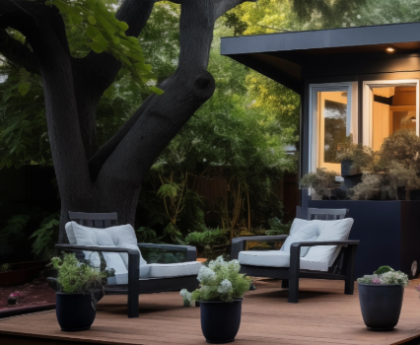Long Beach is the highest per capita producer of accessory dwelling units in the state, a new report says — and these smaller units in more suburban parts of the city have become a key part of the city’s plans to grow its housing stock.
Permitting and construction of these units, typically on single-family lots, has risen 10-fold in Long Beach since 2018, and ADUs accounted for two-thirds of the total housing units permitted in the city last year.
In 2023, the city permitted 671 ADUs in Long Beach compared to 59 in 2018, records show. City officials expect those numbers to rise, or at least hold steady, through the end of this decade.
“When we started doing ADUs, there was a lot of community concern,” said Christopher Koontz, director of Development Services. “But in general, I think people have accepted them.”
Support watchdog journalism
Who has eyes on City Hall? We do. The Long Beach Post is now a 501(c)(3) nonprofit. Donate now to support independent accountability journalism that cuts through the political spin.
An April report from the Rose Institute of State and Local Government shows Long Beach issued 1,431 ADU permits from 2018 to 2022, which accounts for 5.4% of the 26,502 housing units Long Beach is required to add by 2029. That is nearly twice the percentage of other large cities and of the state as a whole.
Koontz said the city has been very welcoming of ADUs, and has worked to make the process less cumbersome for owners and builders. And Long Beach, he said, has always had a mix of housing types, which is likely why there has been little pushback from residents.
“All of these things have helped,” he said.
Authors of the recent report note, however, that San Diego actually has looser requirements for ADUs, yet Long Beach still significantly outpaces its neighbor to the south.
Authors of the Rose Institute study said a contributing factor may be that land in Long Beach is so starkly divided between very high-density zoning in Downtown and Central Long Beach, and large swaths of low-density areas in East Long Beach and parts of North Long Beach, where the majority of ADUs are being built.
“ADU construction has spread new housing development more evenly throughout the city, whereas other types of housing projects have been largely concentrated in select areas,” the study said.
Over the past few years, the city has passed laws relaxing requirements for ADUs, and last year released pre-approved designs to save applicants time and money, which was required by the state. Officials are now working to update city laws to comply with a raft of other state laws passed over the past five years that took much of the decision-making on ADUs away from local municipalities.
The state, for example, requires cities to simplify the approval process and approve these projects within 60 days based on specific, objective criteria. The state also barred cities from requiring a minimum lot size or imposing parking requirements and owner occupancy rules for at least five years.
As a result, the number of ADUs has skyrocketed in California, from less than 2,000 in 2016 to nearly 25,000 in 2022. Production of these units has been especially pronounced in coastal areas, where the land is pricey and more scarce.

ADUs across the state tend to be constructed in higher-income areas, and 92% have been built on land zoned as “single-family,” according to a UC Berkeley study.
Long Beach is also now looking to incentivize construction of more affordable ADUs — another requirement of the state — including offering low-interest loans or funding to build the units, provided they are offered to individuals who qualify for housing vouchers.
The loans or grants will help pay for the cost of building an ADU on existing property, which can run between $150,000 to $400,000, depending on the size and area.
After gathering feedback from the public in 2023, Long Beach officials expect to have more specifics on new ordinances and incentives around ADUs in written form sometime later this year.



